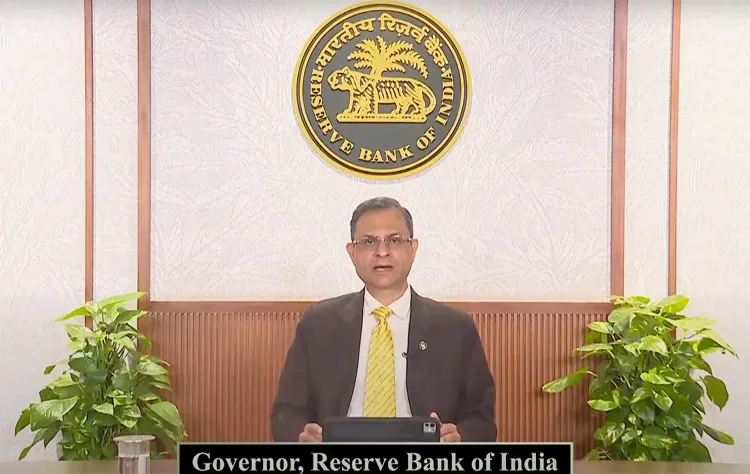Could RBI Lower Rates in December and February, Bringing Repo Rate to 5%?

Synopsis
Key Takeaways
- The RBI may begin lowering interest rates in December 2025.
- The repo rate could decrease to 5% by the end of 2026.
- Lower rates may stimulate consumption and investment.
- The RBI's decisions will consider global economic conditions.
- Two MPC members suggested shifting to an accommodative stance.
New Delhi, Oct 1 (NationPress) The global investment firm Morgan Stanley announced on Wednesday that the Reserve Bank of India (RBI) may initiate interest rate reductions as soon as December of this year, with a subsequent cut anticipated in February 2026.
The analysis indicates that the current repo rate of 5.50 percent might gradually decrease to 5 percent by the end of 2026.
As per Morgan Stanley, easing inflation and the necessity to bolster economic growth will provide the central bank with the opportunity to lower policy rates.
The firm pointed out that India’s consumer price inflation is on a downward trend, while both global crude oil and food prices are stabilizing.
This scenario increases the likelihood of the RBI adopting a more accommodating monetary policy.
The report further noted that a cycle of rate reductions, starting with minor cuts in December 2025 and February 2026, would assist in decreasing borrowing costs for both households and businesses.
“This is expected to enhance consumption, stimulate investment activities, and further propel India’s growth trajectory,” the report highlighted.
Morgan Stanley also emphasized that the RBI will closely monitor global economic conditions, particularly movements in US interest rates and commodity price trends, before finalizing the pace of its rate reductions.
“Should the repo rate indeed fall to 5 percent as projected, it would represent the lowest policy rate in recent years, significantly boosting credit demand in sectors like housing, automobiles, and infrastructure,” Morgan Stanley noted.
The RBI held the repo rate steady at 5.5 percent and maintained a neutral stance in its latest monetary policy review on October 1.
The Monetary Policy Committee (MPC) unanimously decided to keep rates unchanged for the second consecutive meeting.
While this decision met market expectations, analysts pointed out that the current landscape of subdued inflation and sluggish nominal growth provides a potential avenue for easing.
Two MPC members even proposed a shift from a neutral to an accommodative stance, indicating room for future rate cuts.









